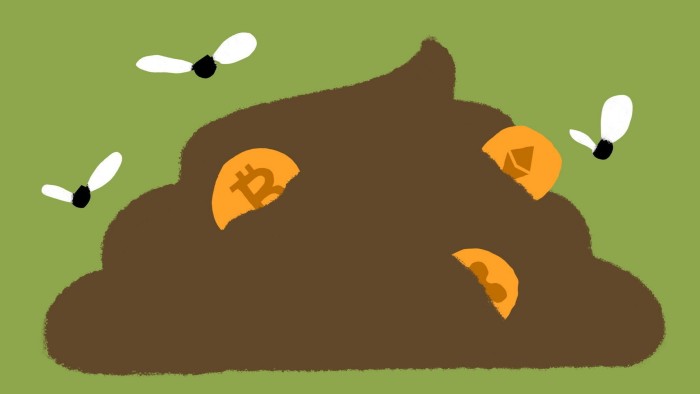What this year in crypto has taught us


Simply sign up to the Cryptocurrencies myFT Digest -- delivered directly to your inbox.
At various points over 2022 — particularly since the collapse of the terra/luna ecosystem in May, and then the FTX exchange in November — people have suggested I take some sort of virtual victory lap for calling out, over several years, the steaming pile of horse manure that is crypto.
And I guess I do feel a certain sense of vindication at seeing the market start to implode, having stood my ground against numerous crypto bros telling me to “have fun staying poor”. But I have been reluctant to write an “I told you so”, because I’m not sure that I really did.
In April, I explained why I was still refusing to take crypto seriously despite many supposedly serious people doing so. (The market has more than halved since then.) In May, I made the moral case against crypto, arguing that it was not just “harmless fun” for the many who couldn’t afford it. (FTX has lost some $8bn, ruining many of its customers’ lives.) And last year, I argued that NFTs were not the future of art or of asset ownership but just the latest crypto get-rich-quick scheme. (These days the only person who seems to find them cool is Donald Trump.)
But I never called the top in the market — given the whole thing is underpinned by sheer belief, that’s always seemed a fool’s errand — and I certainly didn’t forecast exactly how it would start to unravel. In many ways, I have been shocked myself at what has happened in the world of crypto over the past year. It has proved itself more shameless, dishonest, interconnected and fantasy-based than even its strongest critics could have imagined.
So what, in particular, have we learnt from all this?
First, the whole ecosystem was propped up by a lot more leverage than anyone had realised — and this was borrowing in real money, not just the magical strings of 1s and 0s that crypto tokens consist of. What that meant was that when interest rates started to rise from the near-zero levels that the whole market was born out of, and as crypto prices tanked, many platforms — such as Celsius and Voyager — were simply wiped out after billion-dollar holes appeared on their balance sheets. You need real assets to cover real liabilities, it turns out (OK yes, this part we did know).
Second, the idea that the crypto world is decentralised was laid to rest once and for all this year. We already knew that the vast majority of crypto activity takes place on highly centralised exchanges, and that power and wealth in crypto is even more concentrated than in traditional finance. But 2022 was the year that we found out the extent to which Big Crypto is a real thing: a cartel of interconnected players from exchanges, stablecoin companies and crypto networks who work together via group chats — one Signal chat was reportedly called “exchange co-ordination” and included executives from FTX, Binance and Tether.
Third, the economics of the crypto market might be pyramid or Ponzi-like in structure, but they are also circular. Not only have crypto companies counted their own worthless tokens as money, but those of others, too. As Martin Walker of the Center For Evidence-Based Management and a longtime crypto critic, puts it to me, “their books are filled with their and their friends’ nonsense tokens”, and when one of these implodes, “whole chunks of industry can very rapidly disappear”.
Fourth, the collapse of so many crypto exchanges and platforms has allowed us to see up close for the first time the utter lawlessness that fuels crypto. Free from the burdensome yoke of regulation that the non-crypto world has to deal with, the likes of FTX have been free to do as they please, allegedly misappropriating billions of dollars of customers’ funds and committing fraud on a vast scale. “My big takeaway from this year is that we got to see inside the black boxes, and it was even scarier . . . than we expected,” software engineer and crypto critic Stephen Diehl tells me.
During an interview for an FT event last month, I asked Charles Hoskinson, founder of crypto token Cardano, whether it was possible for crypto to collapse to zero. No, he said — hardly surprisingly, but his reason stunned me: “It’s basically a religion at this point.” He, a crypto prophet, seemed to be saying the quiet part out loud.
This is the final thing that I have learnt about crypto this year: it has a strange resilience. The market and many of the biggest platforms might have collapsed, and the prophets and core tenets of this quasi-religion might have proved themselves false. But many people are still willing to suspend disbelief, clinging on to the hope that one day, their miraculous internet money might resume its trajectory to the moon.
Comments